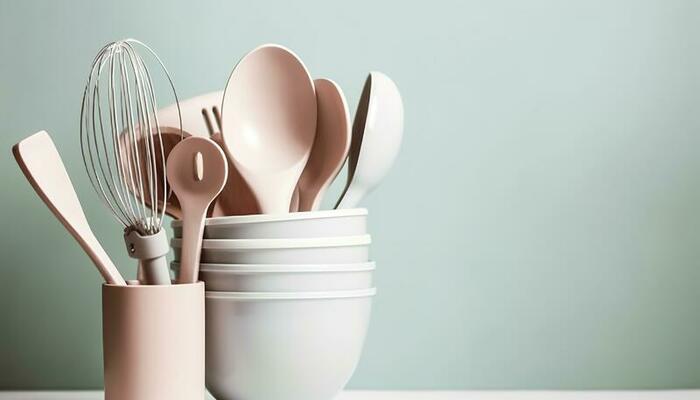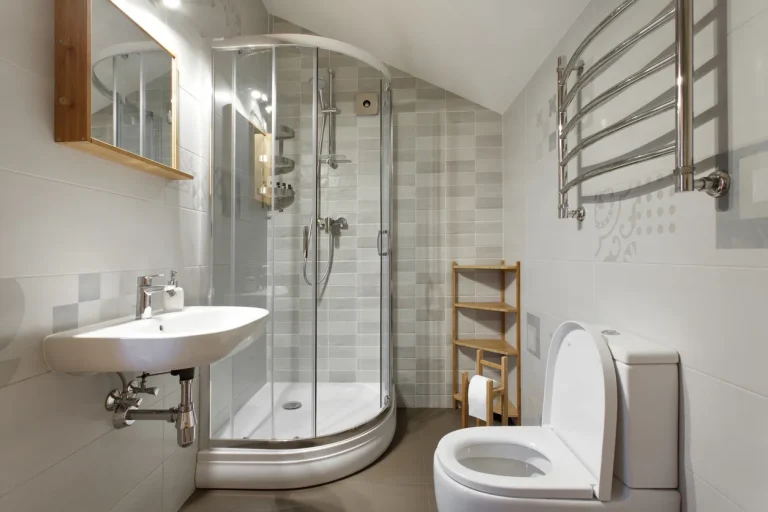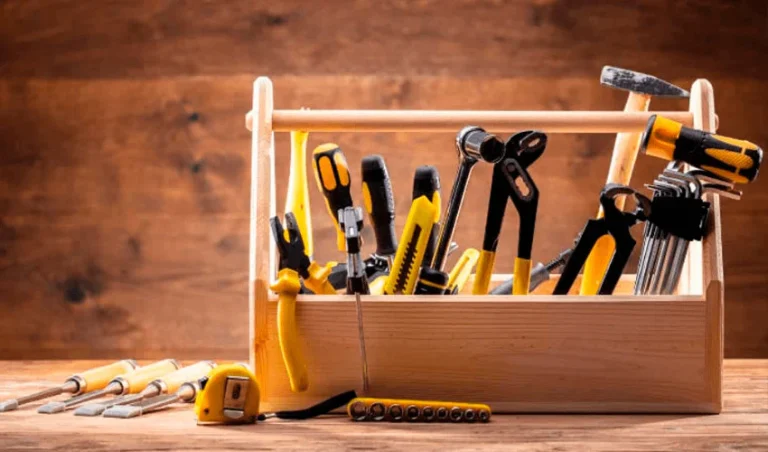
The kitchen, often referred to as the heart of the home, is one of the most crucial areas when it comes to home improvement. It’s where we prepare meals, share conversations, and often gather with family and friends. As a result, making thoughtful upgrades to your kitchen can elevate both its functionality and aesthetic appeal, creating a space that is not only practical but also inviting and stylish.
However, home improvements, especially in the kitchen, require more than just an eye for design. They necessitate the use of the right tools and a strategic approach to ensure that your upgrades are well-executed and built to last. Whether you’re aiming to update your kitchen with modern finishes or you’re undertaking a full renovation, this guide will provide you with helpful insights on how to improve your kitchen with the right tools and thoughtful design choices.
Planning Your Kitchen Improvement
Before diving into any kitchen project, it’s important to have a clear vision of what you want to achieve. What kind of improvements are you looking for? Are you simply updating the appearance with fresh paint and new appliances, or are you planning a more comprehensive renovation that involves cabinetry, countertops, and flooring?
-
Determine Your Budget: Knowing your budget is essential to avoid overspending. Kitchen improvements can range from affordable updates to expensive renovations, so it’s important to establish how much you’re willing to invest in the project.
-
Decide on the Scope of the Renovation: Are you planning minor improvements, such as installing a new backsplash or replacing faucets, or are you looking to remodel the entire kitchen? This decision will guide your choice of tools and materials.
-
Consider Functionality and Design: Keep in mind that a kitchen should be functional as well as beautiful. Think about how you use the space. Do you need more storage? Would a larger island improve workflow? Assessing your daily routines in the kitchen can help you make decisions that will enhance both its usability and style.
Essential Tools for Kitchen Improvement
Whether you’re tackling a small update or a full renovation, having the right tools will make your project run smoothly. Below are some essential tools to help you improve your kitchen:
1. Basic Hand Tools
For minor updates like replacing hardware or installing a new faucet, a set of basic hand tools is all you’ll need.
-
Screwdrivers: A good set of screwdrivers (both flathead and Phillips-head) will help you replace cabinet handles, install light fixtures, or make minor adjustments.
-
Wrench Set: A wrench set is essential for tightening nuts and bolts, especially when installing faucets or plumbing fixtures.
-
Pliers: Pliers are useful for gripping and manipulating items like nuts, bolts, and other small parts that require more precision.
-
Utility Knife: A utility knife is great for cutting through materials like drywall or plastic when making small modifications to cabinets or countertops.
2. Power Tools for Bigger Tasks
For more involved kitchen renovations, such as installing new cabinets or cutting countertops, power tools are indispensable. Some of the most commonly used power tools in kitchen remodeling include:
-
Cordless Drill: A versatile and essential tool, a cordless drill allows you to drill holes and drive screws, making it invaluable for tasks like installing shelving, cabinets, or even new light fixtures.
-
Circular Saw: If you need to cut wood, laminate, or other materials for your kitchen, a circular saw is a must-have. It is perfect for trimming down boards to fit around cabinets or countertops.
-
Jigsaw: A jigsaw is ideal for making precise, curved cuts in wood, plastic, or laminate. This tool is especially useful if you need to cut out spaces for sink installations or other custom cabinetry details.
-
Oscillating Multi-Tool: This tool can perform a variety of functions, from cutting and sanding to scraping and grinding. It’s particularly handy for making precise cuts in tight spaces or for trimming down flooring and cabinetry.
3. Measuring and Leveling Tools
Accurate measurements and level surfaces are essential for any kitchen improvement project. Having the right tools for this task will ensure that your renovations are precise and neat.
-
Tape Measure: A standard tool for measuring spaces, countertops, and cabinets, a tape measure will help you ensure everything fits correctly.
-
Level: A level ensures that your cabinets, countertops, and appliances are aligned properly. It’s essential for both the aesthetic and functionality of the kitchen.
-
Square: A carpenter’s square is especially useful for ensuring corners are square and edges are straight when building or installing cabinets and countertops.
Key Kitchen Improvements to Consider
Once you have the necessary tools, it’s time to consider which aspects of your kitchen to improve. Below are some popular kitchen upgrades that can significantly enhance both the appearance and functionality of your space.
1. Cabinetry Upgrades
The cabinets are one of the most noticeable aspects of any kitchen, so updating them can have a dramatic impact. You can either replace old cabinets entirely or simply upgrade the hardware, like handles and knobs. If you’re feeling ambitious, consider installing open shelving or refacing your existing cabinets for a fresh, modern look.
-
Tools Needed: Cordless drill, screwdriver set, leveling tools.
-
Tip: If replacing cabinets, be sure to measure the space carefully and check that the new units fit correctly before beginning installation.
2. Countertop Replacement
Upgrading your countertops can breathe new life into your kitchen. Materials like granite, quartz, and marble are popular choices, but there are also affordable options like butcher block, laminate, and concrete. The choice of material should depend on your budget, aesthetic preferences, and the level of maintenance you’re willing to commit to.
-
Tools Needed: Circular saw (for cutting countertop material), jigsaw (for custom cuts), measuring tape, level.
-
Tip: If you’re installing a sink or cooktop in your new countertops, make sure to cut out precise measurements. It’s always best to hire a professional if you’re not confident in your ability to handle cutting granite or stone countertops.
3. Backsplash Installation
A backsplash adds both style and practicality to your kitchen by protecting your walls from spills and splashes. Whether you prefer subway tile, mosaic, or a sleek stainless-steel finish, a backsplash can significantly elevate your kitchen’s design.
-
Tools Needed: Tile cutter or wet saw, notched trowel (for applying adhesive), level.
-
Tip: Before starting, ensure that your walls are clean and smooth. If installing tile, be sure to leave a small gap between each piece to create the proper grout lines.
4. Lighting Upgrades
Proper lighting is key to a well-designed kitchen. Task lighting is crucial for food preparation, while ambient lighting sets the mood for the rest of the space. Consider adding under-cabinet lighting, pendant lights over the island, or recessed lighting to illuminate key areas.
-
Tools Needed: Cordless drill, screwdriver set, wire strippers (if wiring is involved).
-
Tip: If you’re replacing or installing light fixtures, make sure to turn off the power at the breaker box to avoid any electrical hazards.
5. Flooring Improvements
The kitchen floor endures a lot of foot traffic, spills, and wear, so it’s important to choose durable materials that are easy to clean. Options like ceramic tile, vinyl, and hardwood are all great choices depending on your budget and style preferences.
-
Tools Needed: Tile cutter or wet saw (for tile), pry bar (to remove old flooring), utility knife (for cutting vinyl or laminate).
-
Tip: Be sure to properly prepare the subfloor before laying new flooring. This may involve removing old flooring and smoothing out any imperfections.
Conclusion
Home improvement projects, especially in the kitchen, can be incredibly rewarding, transforming one of the most important areas of your home into a functional and beautiful space. By equipping yourself with the right tools and taking a thoughtful approach to design, you can make significant upgrades that will last for years to come. From replacing outdated cabinets to upgrading countertops and flooring, every tool and technique you employ can make a meaningful difference in the look and feel of your kitchen. Whether you’re a seasoned DIYer or a beginner, the right preparation, tools, and mindset will help you achieve the kitchen of your dreams.





